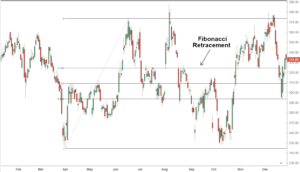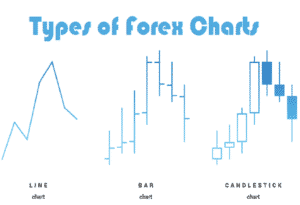Foreign exchange (forex) trading thrives on the ability to identify trends and capitalize on price movements. While numerous technical indicators exist, the Adaptive Triple Exponential Moving Average (AT3) offers a unique perspective for traders seeking a dynamic approach. This comprehensive guide delves into the core principles of the AT3, its applications in forex trading, and strategic considerations for its implementation.
Unveiling the AT3: A Blend of Responsiveness and Smoothing
The AT3 builds upon the foundation of the Triple Exponential Moving Average (TEMA), a technical indicator renowned for its responsiveness to price fluctuations. The TEMA itself is a three-layered moving average, incorporating calculations from shorter, intermediate, and longer timeframes. This layering effect smooths out price data while maintaining sensitivity to trend changes.
The “adaptive” element elevates the ATEM to a new level. The AT3 incorporates a volatility factor into the calculation, dynamically adjusting the responsiveness of the indicator based on market conditions. During periods of high volatility, the AT3 reacts swiftly to capture price movements. Conversely, in low volatility environments, the AT3 adopts a smoother approach, reducing noise and false signals.
Decoding the AT3 Formula: A Glimpse Under the Hood
Understanding the core formula behind the AT3 provides valuable insight into its behavior. While specific calculations may vary across trading platforms, the general principle remains consistent:
AT3 = α * (Price(t)) + (1 – α) * [(EMA1(t-1) + EMA2(t-1) + EMA3(t-1)) / 3] + Volatility Factor
Here’s a breakdown of the key components:
- α: Smoothing factor (typically between 0.01 and 0.1)
- Price(t): Current price of the forex pair
- EMA1(t-1): Single exponential moving average of the price at the previous time period (t-1)
- EMA2(t-1): Double exponential moving average of the price at the previous time period (t-1)
- EMA3(t-1): Triple exponential moving average of the price at the previous time period (t-1)
- Volatility Factor: Dynamically adjusts based on market volatility (specific calculation may vary)
The α factor controls the responsiveness of the AT3. A higher α value translates to a more reactive indicator, while a lower α emphasizes smoothing. The volatility factor adds another layer of adaptability, ensuring the AT3 reacts appropriately to changing market conditions.
Employing the AT3 in Forex Trading Strategies
The AT3 empowers forex traders with a versatile tool for various trading strategies:
- Identifying Trends: The AT3’s ability to capture both short-term and long-term trends makes it valuable for trend-following strategies. An upward sloping AT3 suggests a bullish trend, while a downward slope indicates a bearish trend.
- Dynamic Support and Resistance: The AT3 can act as a dynamic support level during uptrends and a resistance level during downtrends. Price fluctuations around the AT3 can signal potential entry or exit points.
- Confirmation of Price Action: The AT3 can be used alongside other technical indicators like price channels or breakout patterns. When the AT3 aligns with a breakout or confirms a trend within a channel, it strengthens the trade signal.
- Volatility Filtering: The AT3’s adaptive nature helps filter out false signals during periods of high volatility. By adjusting its responsiveness, the AT3 reduces the number of whipsaws (rapid price reversals) that can plague traders.
Putting the AT3 into Practice: Key Considerations
While the AT3 offers a valuable tool, successful implementation requires careful consideration of several factors:
- Timeframe Selection: The effectiveness of the AT3 hinges on the chosen timeframe. Selecting a timeframe that aligns with your trading style and risk tolerance is crucial. For instance, day traders might utilize shorter timeframes, while swing traders might opt for longer ones.
- Volatility Factor Selection: Not all trading platforms explicitly display the volatility factor used in the AT3 calculation. However, traders can observe the indicator’s behavior. A highly reactive AT3 during volatile periods suggests a strong volatility factor. Experimentation with different α values can help fine-tune the AT3’s responsiveness to your preferences.
- Confirmation with Other Indicators: The AT3 is a powerful tool, but it shouldn’t be used in isolation. Combining it with other technical indicators like volume analysis or momentum oscillators can provide a more comprehensive view of the market and strengthen trade signals.
- Risk Management: Always prioritize risk management strategies like stop-loss orders alongside any technical indicator, including the AT3. This helps mitigate potential losses even if the AT3 reading doesn’t translate into a successful trade.
The AT3: A Dynamic Tool, Not a Crystal Ball
It’s important to remember that the AT3, like any technical indicator, is not a foolproof predictor of future price movements. The forex market is inherently complex, influenced by a multitude of factors beyond the scope of a single indicator. Here are some additional considerations to keep in mind:
- Market Psychology: Technical indicators like the AT3 reflect past price movements, but they don’t account for market sentiment or unexpected news events. These psychological factors can cause price deviations from the AT3’s signals.
- False Signals: No indicator is perfect, and the AT3 is no exception. During periods of choppy price action or consolidation, the AT3 might generate false signals. Combining it with confirmation from other indicators can help reduce the likelihood of false entries.
- Backtesting and Refinement: Before deploying the AT3 with real capital, consider backtesting it on historical data. This allows you to assess its effectiveness in different market conditions and refine your parameters (timeframe, α value) for optimal performance.
Embracing Adaptability in the Forex Arena
The AT3 presents a valuable addition to the forex trader’s toolkit. Its dynamic nature allows it to adapt to changing market conditions, offering valuable insights into trends, support/resistance levels, and volatility filtering. However, successful implementation requires a well-rounded approach that considers confirmation from other indicators, proper risk management strategies, and an understanding of the limitations inherent to any technical indicator. By mastering the AT3 and integrating it into a comprehensive trading strategy, forex traders can enhance their ability to navigate the ever-evolving dynamics of the market.
Beyond the AT3: Exploring Additional Tools
The world of forex technical analysis offers a vast array of indicators beyond the AT3. Here are a few additional tools that can complement your trading strategy:
- Moving Average Convergence Divergence (MACD): This popular indicator gauges momentum by measuring the difference between two exponential moving averages.
- Relative Strength Index (RSI): The RSI measures price momentum and identifies potential overbought or oversold conditions.
- Bollinger Bands: These bands depict volatility by calculating standard deviations above and below a moving average.
Remember, the key to success in forex trading lies in continuous learning, experimentation, and adapting your strategies to the ever-changing market landscape. By incorporating the AT3 and other technical tools alongside a strong foundation in risk management, you can position yourself for informed decision-making in the dynamic world of forex trading.
Let’s Manage Your Forex Funds With Fx Pips Guru!
Fx Pips Guru is a forex fund management company managing client’s funds based on monthly profit share. Let’s do Live Chat with our experts.




